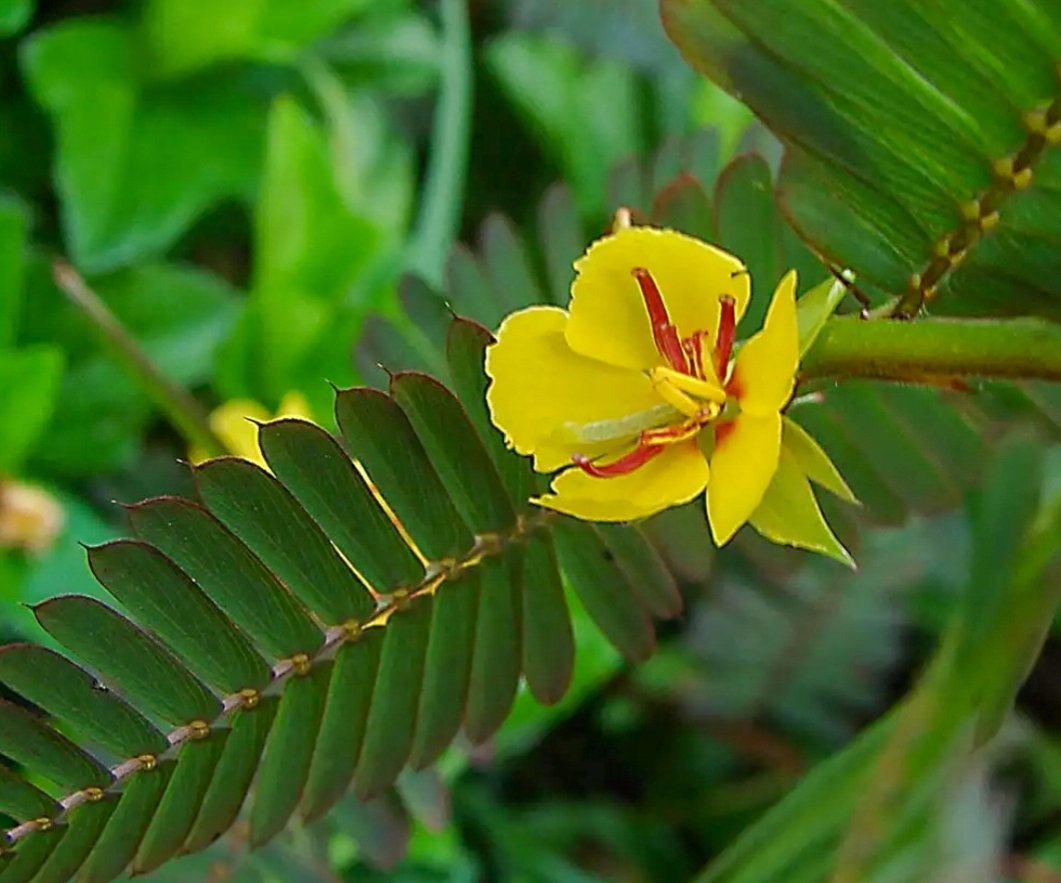 Image 1 of 6
Image 1 of 6

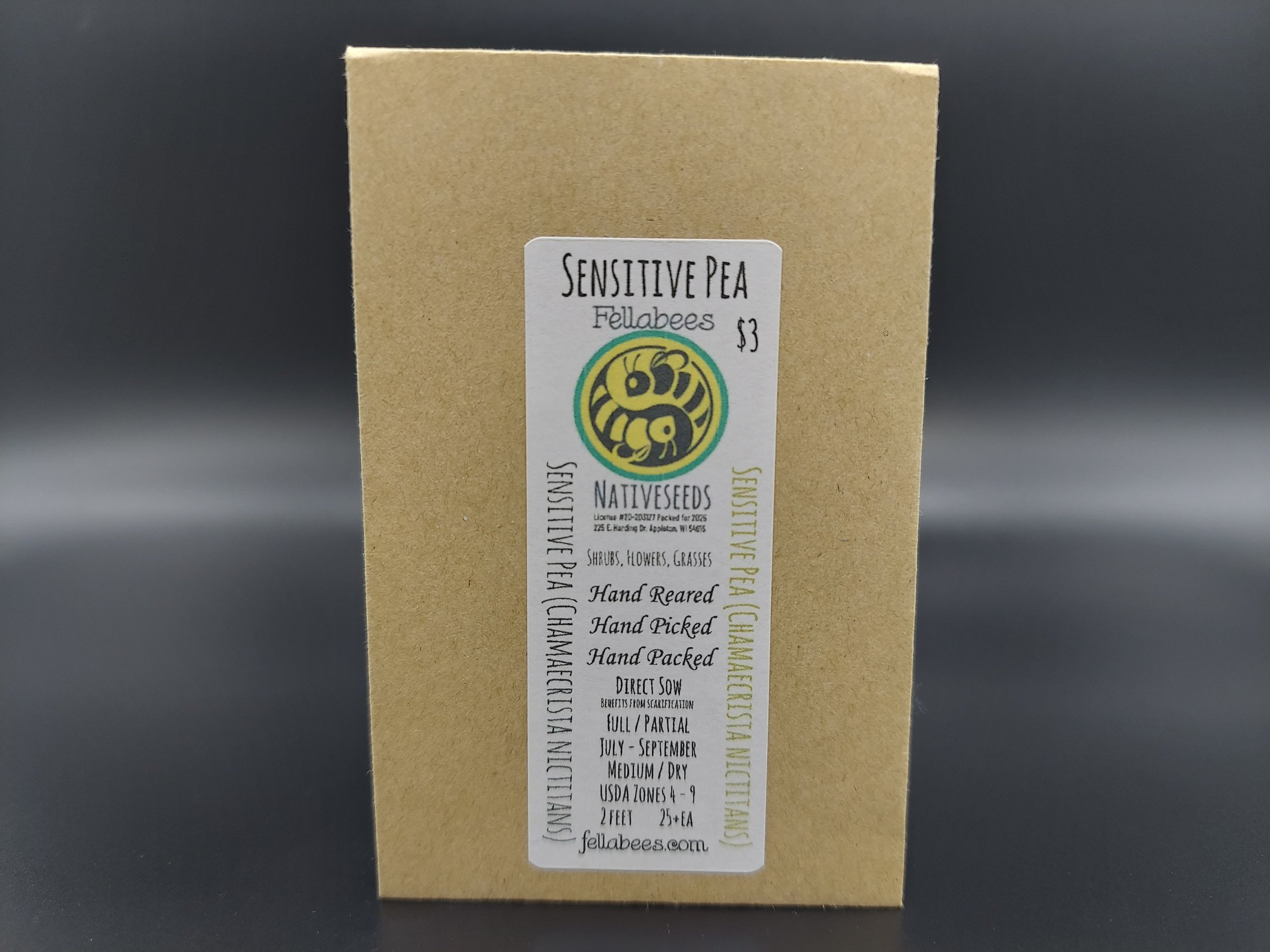 Image 2 of 6
Image 2 of 6

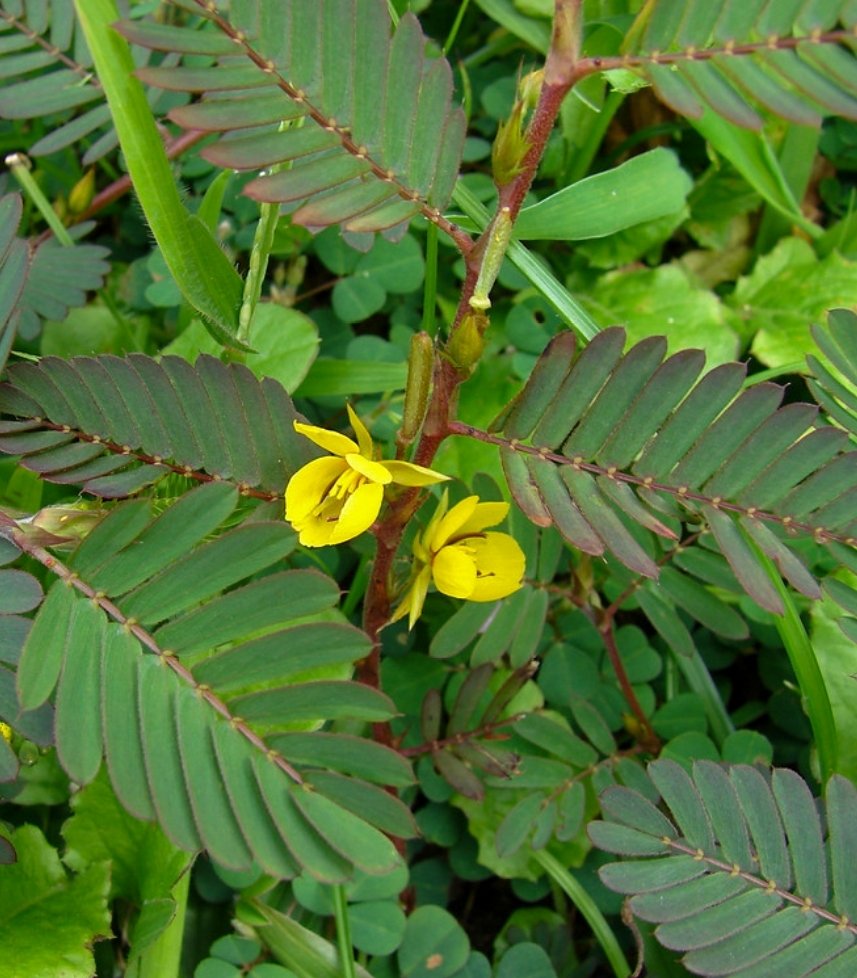 Image 3 of 6
Image 3 of 6

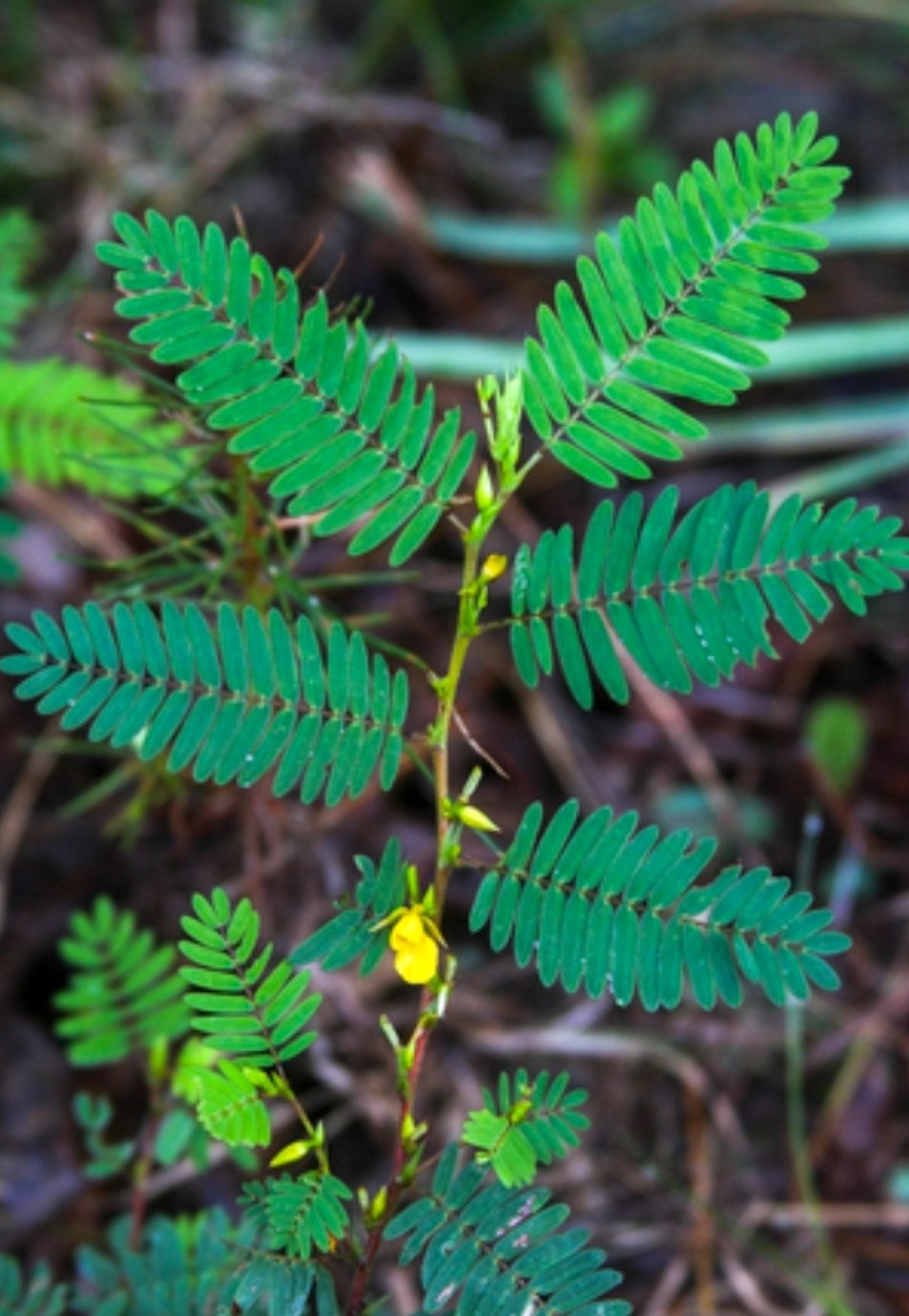 Image 4 of 6
Image 4 of 6

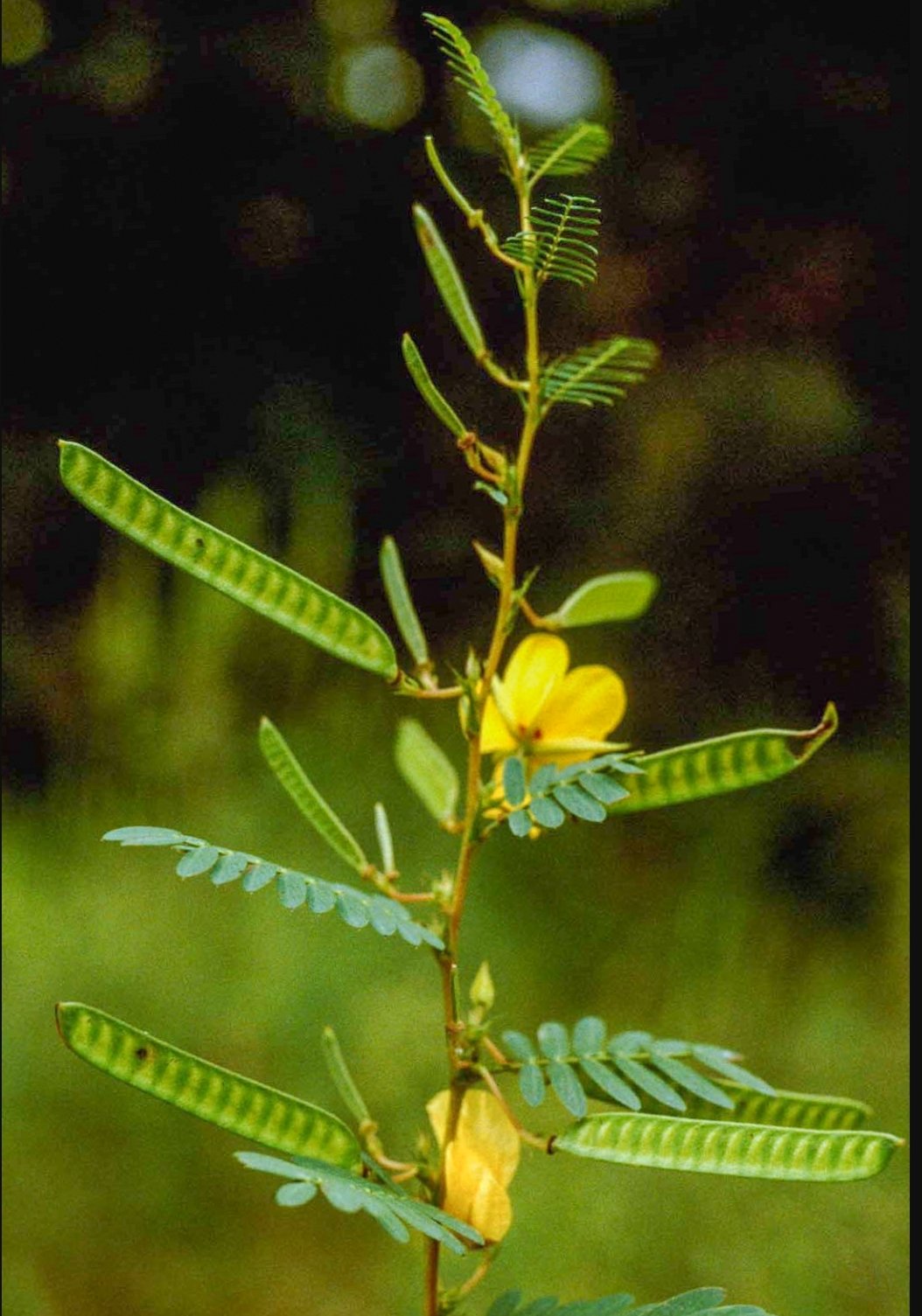 Image 5 of 6
Image 5 of 6

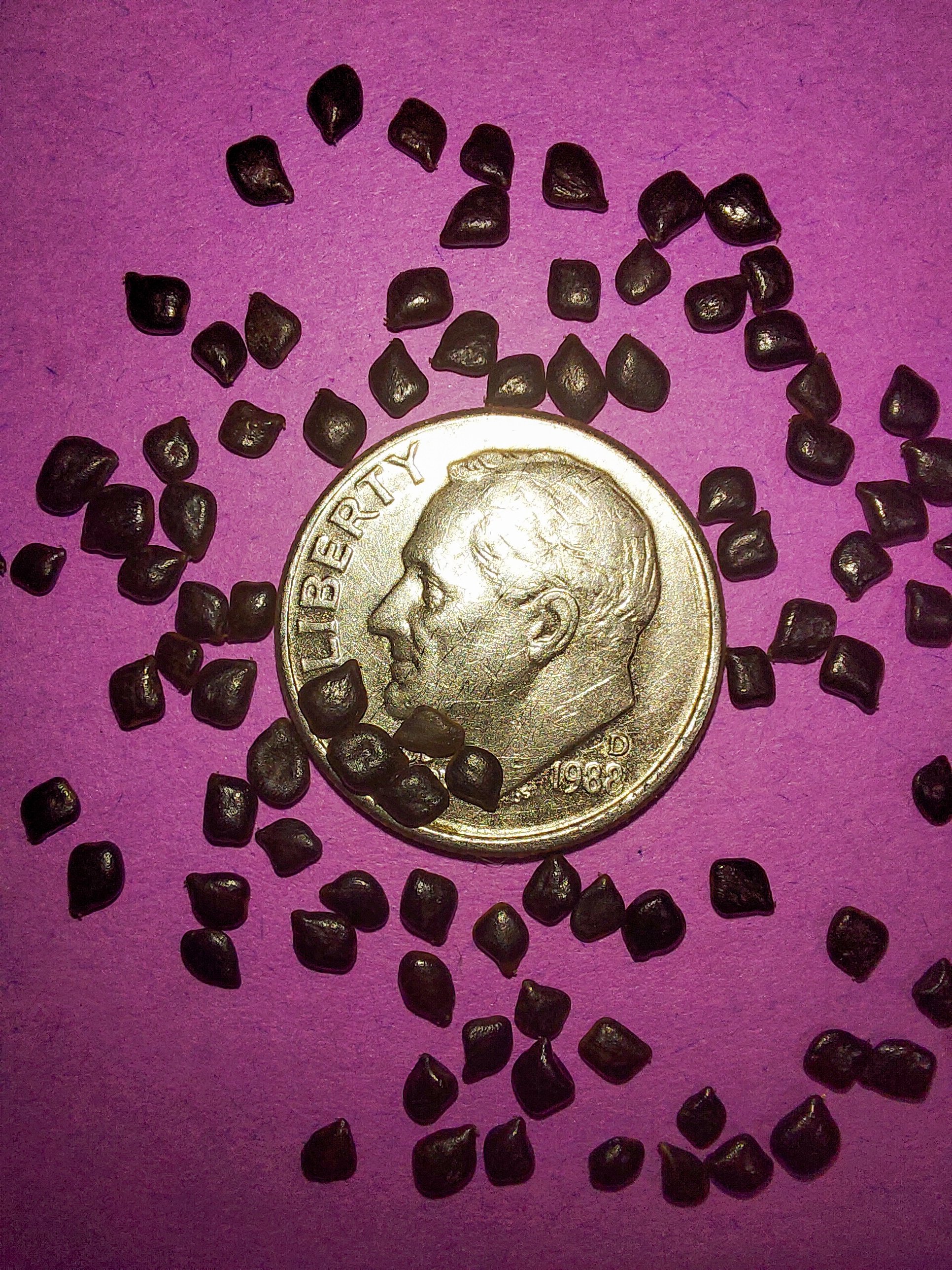 Image 6 of 6
Image 6 of 6







Sensitive Pea (Chamaecrista nictitans)
Sensitive Pea (Chamaecrista nictitans)
The leaves of this remarkable native annual will respond to touch by closing its leaves!
Sensitive Pea will rapidly reseed, but is sensitive to competition, after their season is over it is a good practice to harvest the seed, mow the area, disk it if you can, and resow the harvested seed in the same area. Winter will scarify the seed naturally and they will germinate readily in spring!
As with Partridge Pea (Chamaecrista fasciculata) this plant is a powerful nitrogen fixer and will pull nitrogen from the air and stor it in the soil, making all that grow near it benefit from natural fertilizer! No inocuoulum is needed as both species will happily colonize native inoculant sources to help it in this task.
Sensitive Pea attracts a wide range of pollinators including parisitoid wasps who will sip on the nectar and then hunt pests in the area. Ants also enjoy this plant and are responsible for helping spread the seed and incidental pollination. Jumping spiders are also frequent visitors to Sensitive Pea making this species a beacon for predators and a benefit to have nearby vegetable gardens or native plants that suffer from unwanted insect predation.
As a host plant for the Cloudless Sulfer Butterfly and the Little Sulfer Butterfly caterpillars, you can be assured that this plant not only reacts to human touch, but is interactive and instrumental to nature.
Plant Details
USDA Zones: 4-9
Germination Needs: Needs scarification and will germinate easily when direct sown
Life Cycle: Annual
Sun Exposure: Full to Partial
Soil Moisture: Medium, Medium-Dry, Dry
Plant Spacing: 6-12 inches
Height: 1½-2 feet
Bloom time: July, August, September
Bloom Color: Yellow
Advantages :
Pollinator Favorite: butterflies, moths, bees, wasps, beetles
Bird Favorite: seeds, insects, fruit, nectar, nesting, perchs.
Deer Resistant: Yes
Native to : Illinois, Indiana, Michigan, Ohio, Pennsylvania, New York, Vermont, New Hampshire, Massachusetts, Rhode Island, Connecticut, Delaware, Maryland, New Jersey, West Virginia, Virginia, Kentucky, Tennessee, North Carolina, South Carolina, Georgia, Florida, Alabama, Mississippi, Louisiana, Arkansas, Missouri, Texas, Oklahoma and Kansas.
This species is considered present but rare in several counties of the state of Vermont.
This plant is considered to be extirpated (locally extinct) in one county of New Hampshire.
.
.
Packet quantities:
We pride ourselves on ethical, hands on, ecological management, using no mechanical or chemical methods whatsoever.
All of our native seed is hand reared, hand picked, and hand packed from native prairies under our exclusive management, never breaking chain of custody from the field until it is sent to you. Each packet is hand prepared for shipment by us, directly.
Small seed species will contain greater than 20-25 seed
Large seed species will contain greater than 10-15 seed
All packets are individually marked at the bottom of the front label with expected count, however most if not all packets will have many more than the minimum count by default.
It is our mission to spread the wealth of native plant and pollinator ecological sustainability, and educate back yard gardeners as well as corporate and government entities in how to germinate, grow, and benefit from native synergies.
Thank you for your support, it is because of you, that we can grow together to do, what we do.🐛🦋🐝🐞🌾🌱🌼🧡
Sensitive Pea (Chamaecrista nictitans)
The leaves of this remarkable native annual will respond to touch by closing its leaves!
Sensitive Pea will rapidly reseed, but is sensitive to competition, after their season is over it is a good practice to harvest the seed, mow the area, disk it if you can, and resow the harvested seed in the same area. Winter will scarify the seed naturally and they will germinate readily in spring!
As with Partridge Pea (Chamaecrista fasciculata) this plant is a powerful nitrogen fixer and will pull nitrogen from the air and stor it in the soil, making all that grow near it benefit from natural fertilizer! No inocuoulum is needed as both species will happily colonize native inoculant sources to help it in this task.
Sensitive Pea attracts a wide range of pollinators including parisitoid wasps who will sip on the nectar and then hunt pests in the area. Ants also enjoy this plant and are responsible for helping spread the seed and incidental pollination. Jumping spiders are also frequent visitors to Sensitive Pea making this species a beacon for predators and a benefit to have nearby vegetable gardens or native plants that suffer from unwanted insect predation.
As a host plant for the Cloudless Sulfer Butterfly and the Little Sulfer Butterfly caterpillars, you can be assured that this plant not only reacts to human touch, but is interactive and instrumental to nature.
Plant Details
USDA Zones: 4-9
Germination Needs: Needs scarification and will germinate easily when direct sown
Life Cycle: Annual
Sun Exposure: Full to Partial
Soil Moisture: Medium, Medium-Dry, Dry
Plant Spacing: 6-12 inches
Height: 1½-2 feet
Bloom time: July, August, September
Bloom Color: Yellow
Advantages :
Pollinator Favorite: butterflies, moths, bees, wasps, beetles
Bird Favorite: seeds, insects, fruit, nectar, nesting, perchs.
Deer Resistant: Yes
Native to : Illinois, Indiana, Michigan, Ohio, Pennsylvania, New York, Vermont, New Hampshire, Massachusetts, Rhode Island, Connecticut, Delaware, Maryland, New Jersey, West Virginia, Virginia, Kentucky, Tennessee, North Carolina, South Carolina, Georgia, Florida, Alabama, Mississippi, Louisiana, Arkansas, Missouri, Texas, Oklahoma and Kansas.
This species is considered present but rare in several counties of the state of Vermont.
This plant is considered to be extirpated (locally extinct) in one county of New Hampshire.
.
.
Packet quantities:
We pride ourselves on ethical, hands on, ecological management, using no mechanical or chemical methods whatsoever.
All of our native seed is hand reared, hand picked, and hand packed from native prairies under our exclusive management, never breaking chain of custody from the field until it is sent to you. Each packet is hand prepared for shipment by us, directly.
Small seed species will contain greater than 20-25 seed
Large seed species will contain greater than 10-15 seed
All packets are individually marked at the bottom of the front label with expected count, however most if not all packets will have many more than the minimum count by default.
It is our mission to spread the wealth of native plant and pollinator ecological sustainability, and educate back yard gardeners as well as corporate and government entities in how to germinate, grow, and benefit from native synergies.
Thank you for your support, it is because of you, that we can grow together to do, what we do.🐛🦋🐝🐞🌾🌱🌼🧡
Sensitive Pea (Chamaecrista nictitans)
The leaves of this remarkable native annual will respond to touch by closing its leaves!
Sensitive Pea will rapidly reseed, but is sensitive to competition, after their season is over it is a good practice to harvest the seed, mow the area, disk it if you can, and resow the harvested seed in the same area. Winter will scarify the seed naturally and they will germinate readily in spring!
As with Partridge Pea (Chamaecrista fasciculata) this plant is a powerful nitrogen fixer and will pull nitrogen from the air and stor it in the soil, making all that grow near it benefit from natural fertilizer! No inocuoulum is needed as both species will happily colonize native inoculant sources to help it in this task.
Sensitive Pea attracts a wide range of pollinators including parisitoid wasps who will sip on the nectar and then hunt pests in the area. Ants also enjoy this plant and are responsible for helping spread the seed and incidental pollination. Jumping spiders are also frequent visitors to Sensitive Pea making this species a beacon for predators and a benefit to have nearby vegetable gardens or native plants that suffer from unwanted insect predation.
As a host plant for the Cloudless Sulfer Butterfly and the Little Sulfer Butterfly caterpillars, you can be assured that this plant not only reacts to human touch, but is interactive and instrumental to nature.
Plant Details
USDA Zones: 4-9
Germination Needs: Needs scarification and will germinate easily when direct sown
Life Cycle: Annual
Sun Exposure: Full to Partial
Soil Moisture: Medium, Medium-Dry, Dry
Plant Spacing: 6-12 inches
Height: 1½-2 feet
Bloom time: July, August, September
Bloom Color: Yellow
Advantages :
Pollinator Favorite: butterflies, moths, bees, wasps, beetles
Bird Favorite: seeds, insects, fruit, nectar, nesting, perchs.
Deer Resistant: Yes
Native to : Illinois, Indiana, Michigan, Ohio, Pennsylvania, New York, Vermont, New Hampshire, Massachusetts, Rhode Island, Connecticut, Delaware, Maryland, New Jersey, West Virginia, Virginia, Kentucky, Tennessee, North Carolina, South Carolina, Georgia, Florida, Alabama, Mississippi, Louisiana, Arkansas, Missouri, Texas, Oklahoma and Kansas.
This species is considered present but rare in several counties of the state of Vermont.
This plant is considered to be extirpated (locally extinct) in one county of New Hampshire.
.
.
Packet quantities:
We pride ourselves on ethical, hands on, ecological management, using no mechanical or chemical methods whatsoever.
All of our native seed is hand reared, hand picked, and hand packed from native prairies under our exclusive management, never breaking chain of custody from the field until it is sent to you. Each packet is hand prepared for shipment by us, directly.
Small seed species will contain greater than 20-25 seed
Large seed species will contain greater than 10-15 seed
All packets are individually marked at the bottom of the front label with expected count, however most if not all packets will have many more than the minimum count by default.
It is our mission to spread the wealth of native plant and pollinator ecological sustainability, and educate back yard gardeners as well as corporate and government entities in how to germinate, grow, and benefit from native synergies.
Thank you for your support, it is because of you, that we can grow together to do, what we do.🐛🦋🐝🐞🌾🌱🌼🧡
